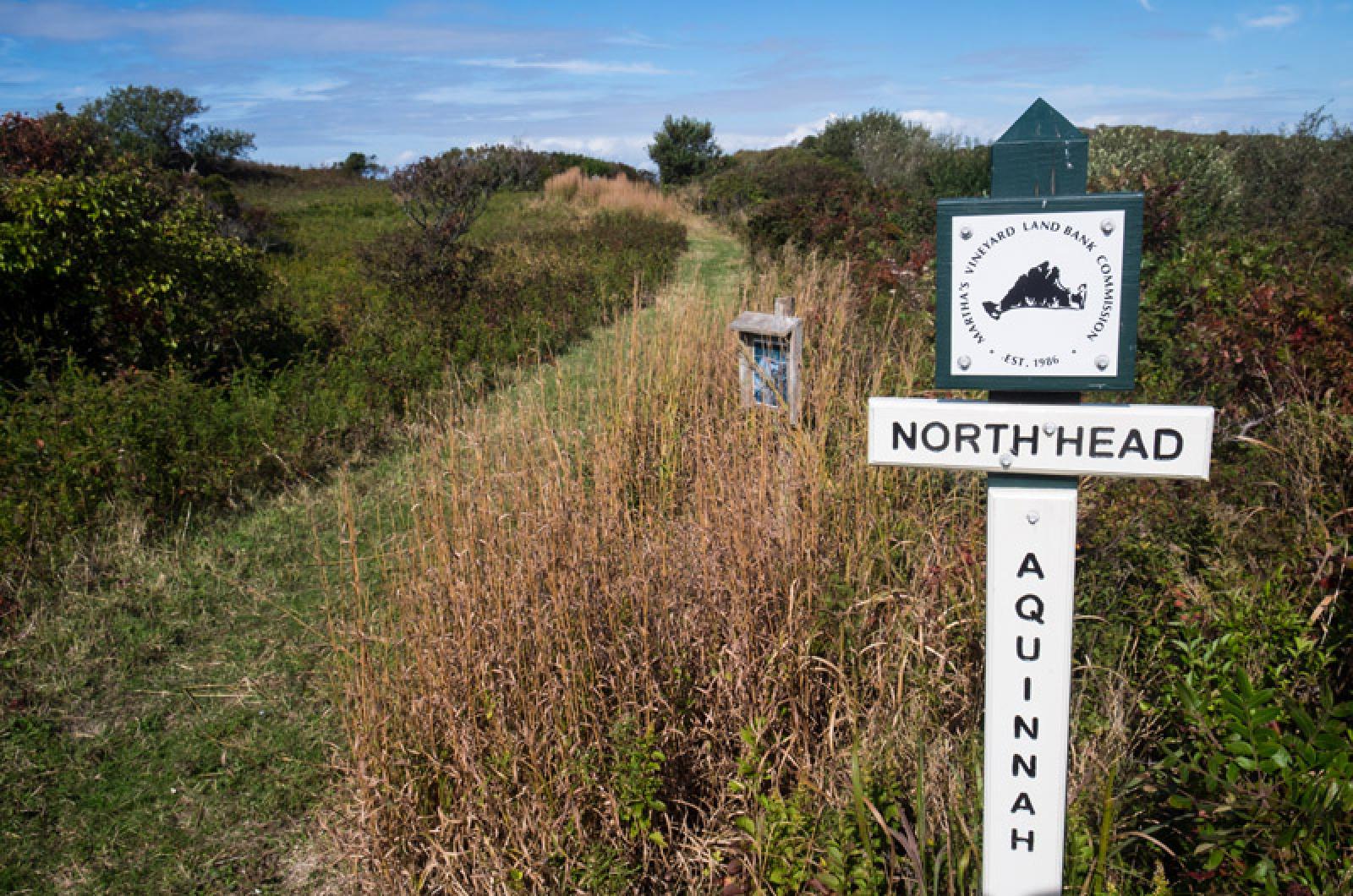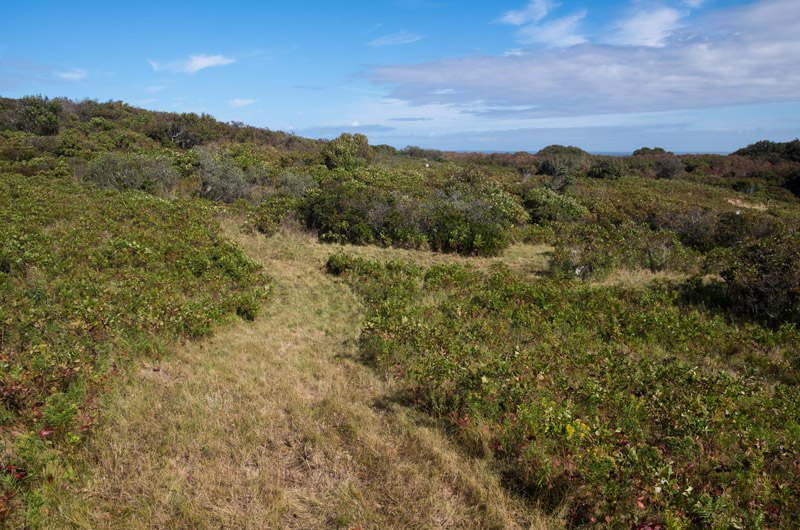Two hiking trails, both leading to a windswept bluff overlooking the ocean in Aquinnah, cannot be connected to create a single loop trail, the state’s highest court ruled this week. In a unanimous decision, the Supreme Judicial Court refused to tinker with the law regarding easements to allow the Martha’s Vineyard Land Bank to link two adjacent parcels that are part of the 49-acre Aquinnah Headlands Preserve.
The ruling is a victory for the Taylor family, owners of the Outermost Inn, who went to court to block the land bank from using an easement that passes next to the inn, in order to provide access to an additional piece of property.
Hugh C. Taylor, a trustee of Taylor Realty Trust which owns the inn, said in a telephone interview on Wednesday that the decision provides clarity about the easements and about his obligations to the land bank for access to the trail.
“I don’t mind being a good neighbor to anybody, but it was incumbent on me to find out what our legal obligations are, and the only way was to go to court,” he said.
The land bank, one of the Island’s largest landowners, currently has a 40-foot-wide easement that crosses Taylor land to reach three land bank properties. The parcels are in the North Head section of the Aquinnah Headlands Preserve, the site of an old Coast Guard station, that opened to the public in 2011. The trail rolls out to the cliffs northwest of the Aquinnah lighthouse, with breathtaking views of Vineyard Sound and the Elizabeth Islands beyond.
The Outermost group sued to prevent the land bank from extending the trail into a fourth parcel, called Diem lot 5, claiming the easement across the Outermost lot was not intended to serve that property. The land bank has another trail that ultimately leads to the Diem parcel and uses a 20-foot easement across a different piece of Outermost land, and had hoped eventually to link the two. The second trail has not undergone a complete planning and permitting process and is not yet open to the public.
In its decision, the court declined to change a “bright line” rule that has existed for six decades barring easements from being extended to properties for which they were not originally intended.
In oral arguments before the court in March, the land bank’s lawyers had argued for a more flexible rule that would allow exceptions when the outcome would have little adverse impact.
Attorney Dianne C. Tillotson, arguing for the land bank, said there would be no real impact to the Taylor family by connecting the two trails.
“We’re not talking about a parking lot being placed on the Diem lot,” she said. “We’re not talking about a two-family home in the place of a single-family residence. We’re talking about the same use by the same users . . . by the same means of transport.”
But the court said the current law gives landowners a degree of predictability.
“We conclude that the benefits of preserving the longstanding, bright-line rule set forth in [a 1965 ruling by the court] outweigh any costs associated with its rigidity…” wrote Justice Barbara A. Lenk.
The court’s ruling used the example of a company that purchases a small parcel of land served by an easement, and then uses that easement to link to multiple adjoining parcels to develop large commercial developments.
James Lengyel, executive director of the land bank, downplayed the decision, saying an earlier court decision had affirmed the more significant right of public access to the parcels using easements across Outermost land.
The North Head portion of the Aquinnah preserve contains several parcels purchased by the land bank in the early to mid-1990s. No signs or markers along Lighthouse Road direct hikers to the trails; they are situated at the trailhead itself, which is not visible from the road. Parking and a map are available to the southwest, on the other side of the Aquinnah circle by the South Head trailhead. The available North Head trails are closed in the high season, from mid-June to mid-September.









Comments (13)
Comments
Comment policy »